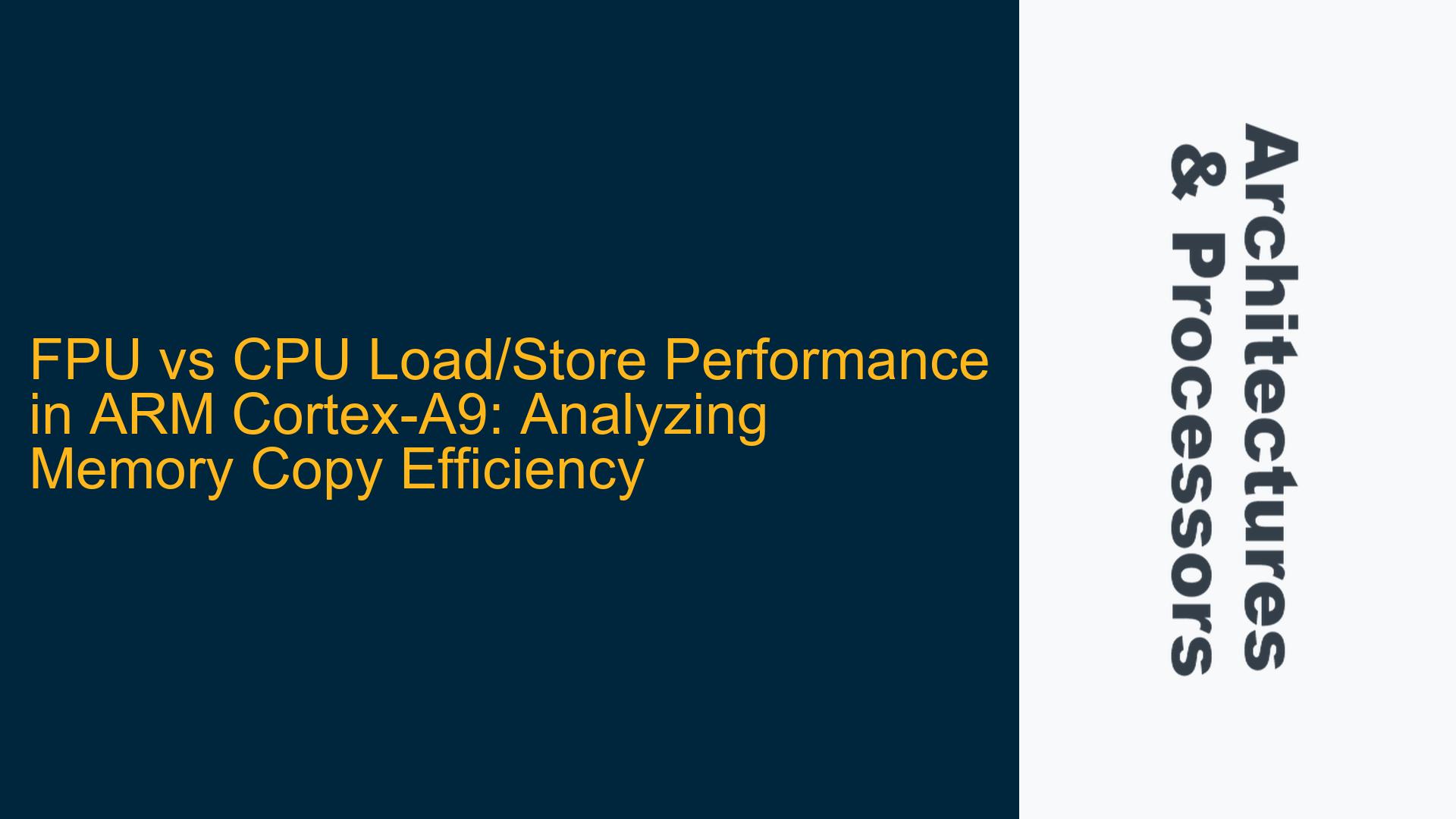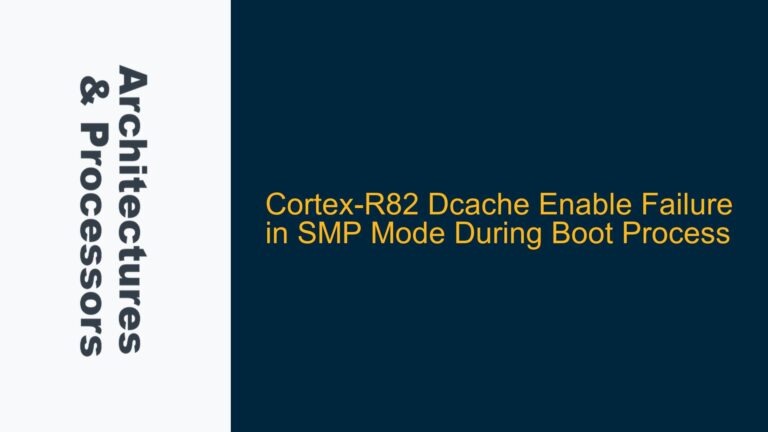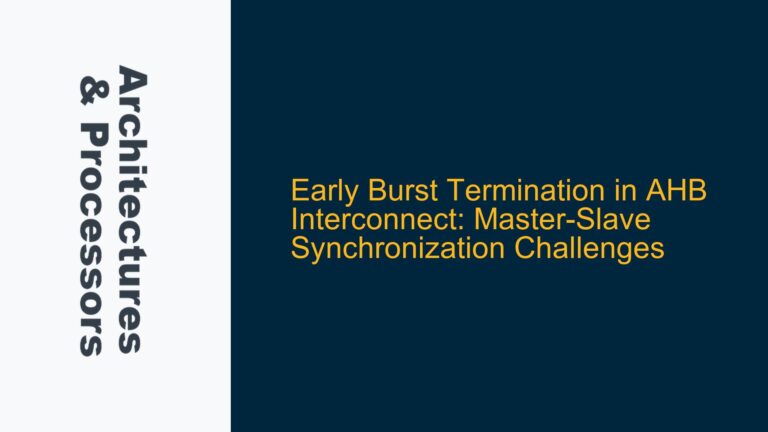ARM Cortex-A9 FPU-Enabled Memcpy Performance Discrepancy
The ARM Cortex-A9 processor, known for its dual-core architecture and advanced features like the Floating Point Unit (FPU) and NEON extensions, is widely used in embedded systems for its balance of performance and power efficiency. However, a common issue arises when developers enable the FPU for memory copy operations, expecting performance improvements, only to find that the execution time remains comparable to non-FPU implementations. This discrepancy is particularly evident in bare-metal firmware or First-Stage Bootloader (FSBL) implementations, where memory copy operations are critical for system initialization.
When the FPU is enabled, the linker may opt to use FPU-enabled versions of standard library functions like memcpy, which rely on Vector Load (vldr) and Vector Store (vstr) instructions. These instructions operate on 64-bit data granularity, similar to the non-FPU ldrd and strd instructions. Despite the theoretical advantages of FPU registers and parallel processing capabilities, the observed performance gains are often negligible, especially when caches are enabled. This raises the question: why does the FPU-enabled memcpy exist, and under what circumstances does it provide tangible benefits?
The core of the issue lies in the interaction between the FPU, CPU, and memory subsystem. The FPU and NEON units are optimized for parallel data processing, such as matrix multiplications or signal processing tasks, where large datasets are processed in bulk. However, for simple memory copy operations, the overhead of managing FPU registers and the lack of direct L1 cache utilization can offset any potential gains. Additionally, the specific implementation of FPU-enabled memcpy in the compiler’s standard library may not fully exploit the hardware’s capabilities, leading to suboptimal performance.
Memory Access Granularity and Register Pressure in FPU-Enabled Memcpy
One of the primary factors contributing to the performance discrepancy between FPU and non-FPU memcpy implementations is the granularity of memory access and the associated register pressure. The ARM Cortex-A9 FPU supports 64-bit and 128-bit data transfers using vldr and vstr instructions, which theoretically allow for higher throughput compared to the 64-bit ldrd and strd instructions used in non-FPU implementations. However, the actual performance benefits depend on several factors, including the alignment of memory accesses, the efficiency of the memory subsystem, and the overhead of managing FPU registers.
In the FPU-enabled memcpy implementation, each vldr and vstr instruction operates on 64-bit data, requiring four FPU registers to handle a 256-bit block of data. This results in significant register pressure, as the FPU registers must be carefully managed to avoid conflicts and ensure correct data transfer. In contrast, the non-FPU implementation uses general-purpose registers (GPRs), which are more abundant and easier to manage. While the FPU registers provide higher bandwidth, the additional complexity of managing these registers can negate the performance benefits, especially for smaller copy operations.
Another critical factor is the impact of cache utilization. The ARM Cortex-A9 L1 cache is optimized for CPU operations, while the FPU and NEON units primarily rely on the L2 cache. This means that FPU-enabled memory copy operations may not benefit from the faster L1 cache, leading to higher latency and reduced throughput. Additionally, the lack of cache coherency between the FPU and CPU can further degrade performance, as data must be explicitly synchronized between the two units.
Optimizing FPU-Enabled Memcpy for ARM Cortex-A9
To address the performance discrepancy between FPU and non-FPU memcpy implementations, developers can take several steps to optimize the use of FPU registers and improve cache utilization. The first step is to analyze the specific memory access patterns and align data structures to take advantage of the FPU’s capabilities. For example, aligning data to 128-bit boundaries can enable the use of 128-bit vldr and vstr instructions, which provide higher throughput compared to 64-bit operations.
Another optimization technique is to minimize register pressure by carefully managing FPU registers and reducing the number of intermediate operations. This can be achieved by unrolling loops and processing larger blocks of data in each iteration, reducing the overhead of register management. Additionally, developers can leverage the ARM Cortex-A9’s dual-core architecture by parallelizing memory copy operations across both cores, further improving throughput.
Cache utilization can be improved by explicitly managing cache lines and ensuring that data is prefetched into the L1 cache before being processed by the FPU. This can be achieved using cache preload instructions or by manually copying data into a buffer that is explicitly marked as cacheable. Additionally, developers can use data synchronization barriers to ensure that data is correctly synchronized between the FPU and CPU, reducing the risk of cache coherency issues.
Finally, developers should consider customizing the memcpy implementation to better suit their specific use case. While the standard library implementation may not fully exploit the FPU’s capabilities, a custom implementation can be tailored to the specific requirements of the application, optimizing for factors such as data alignment, register pressure, and cache utilization. By carefully analyzing the performance characteristics of the target hardware and implementing targeted optimizations, developers can achieve significant performance improvements in FPU-enabled memory copy operations.
In conclusion, while the ARM Cortex-A9 FPU provides powerful capabilities for parallel data processing, its benefits for memory copy operations are not always immediately apparent. By understanding the underlying factors contributing to the performance discrepancy and implementing targeted optimizations, developers can unlock the full potential of the FPU and achieve significant performance improvements in their embedded systems.






